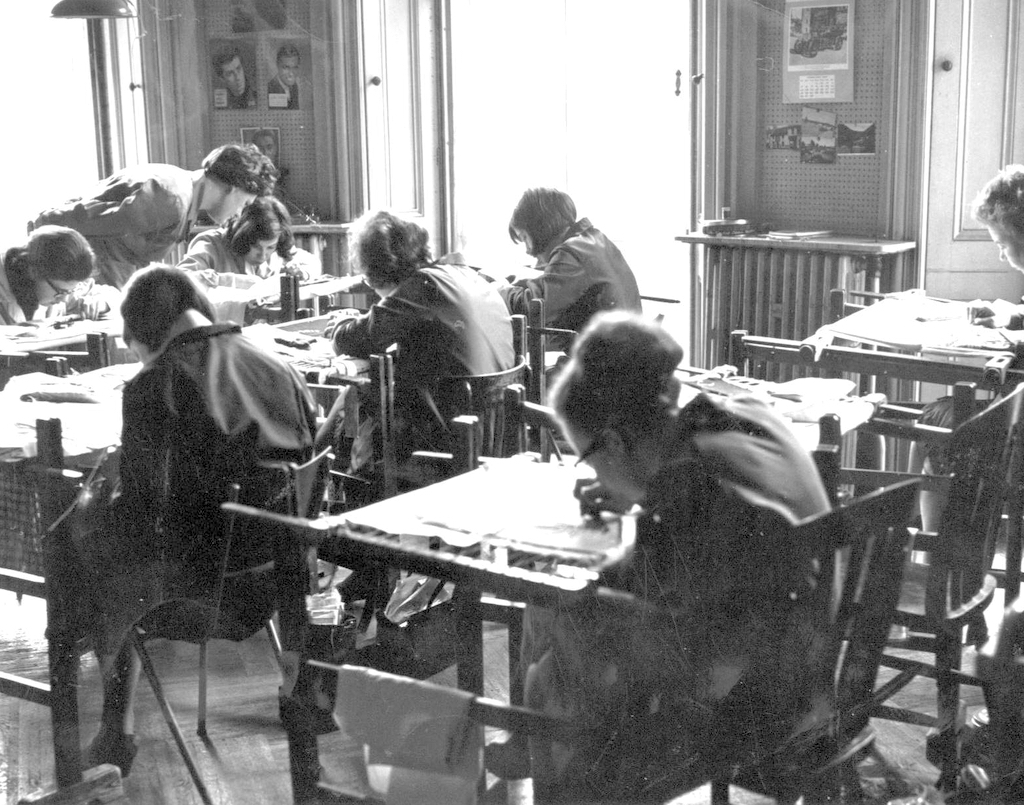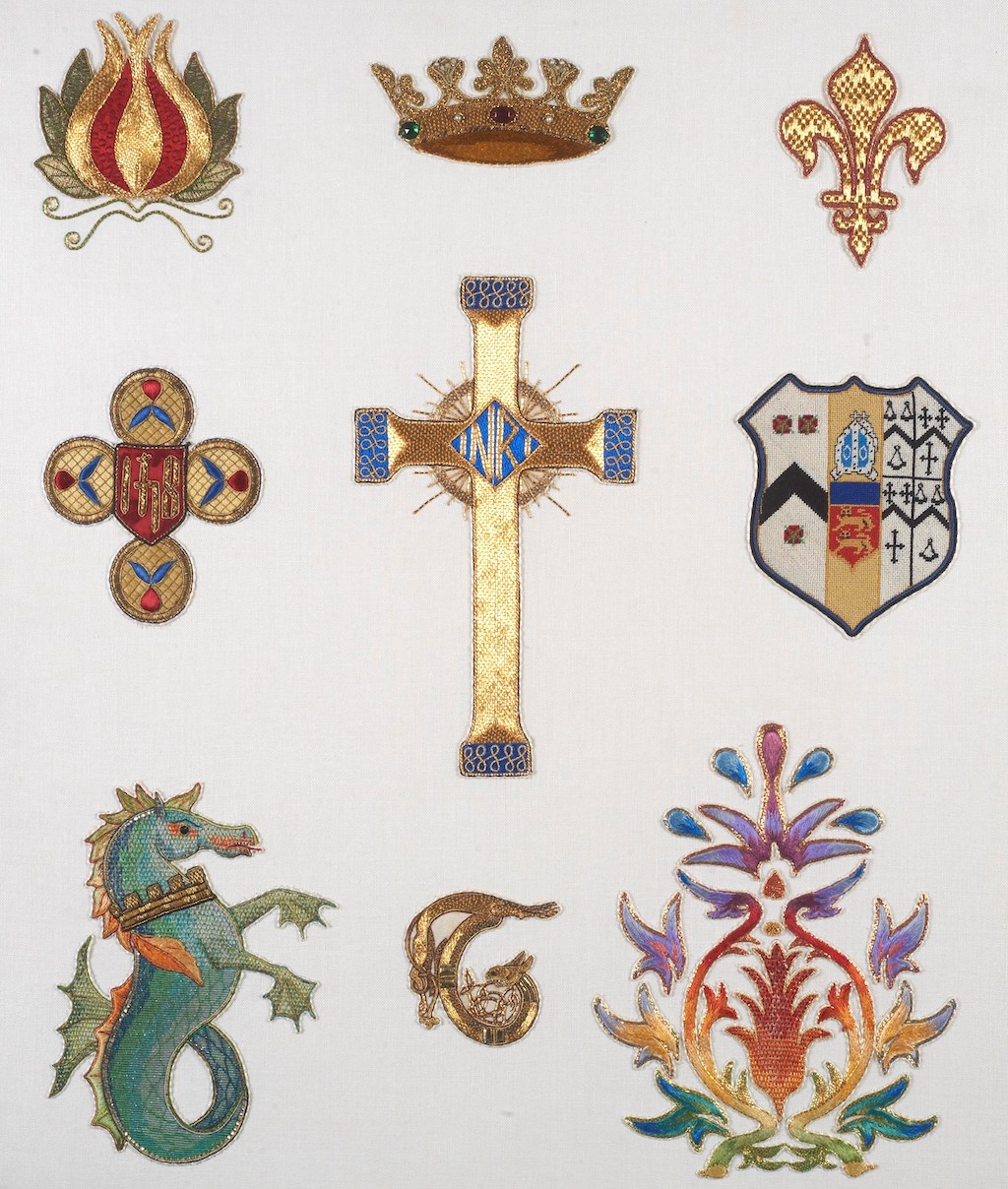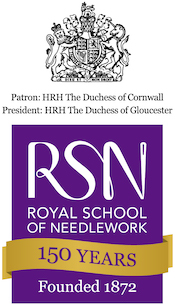Latest news
Keep up to date with all the latest news from the Royal School of Needlework
Teaching is at the Heart of the RSN
29th April, 2020
Learning to teach hand embroidery has always been at the heart of the RSN, albeit there have been a variety of formats for the course. This is the backbone of the RSN, training people to work in our Embroidery Studio and to teach for the RSN.
 The RSN Workroom at Princes Gate in the 1960s
The RSN Workroom at Princes Gate in the 1960s
Back in 1872, when the RSN was founded, the training was just nine days, with a test on the tenth day. Only if a student passed were they admitted in to the ‘Workroom’ (which has been known as the ‘RSN Embroidery Studio’ since the early 2000s). But it did not take long for the RSN to realise that a more extensive training would be required.
In the 1890s, we started evening classes for those who had the temerity to be teaching hand embroidery but who were self-taught. These classes were launched with a lecture by Walter Crane. The classes ran four evenings a week, two on hand embroidery and two on design but students could come in on Friday evenings too for what we still refer to as ‘work on own’. This was offered to recognise that women might not have the space to practice their embroidery at home, so the classrooms were open.
At the end of the 19th century, the RSN developed a three-year Diploma as its main training course for those who would go on to be needlework teachers and not just for the RSN. This course continued until the end of the 1950s. For much of this period the syllabus was the same and, as a result, it is possible to recognise pieces from former Diploma students, particularly their final examination piece. This piece began with three symbols which were used to introduce students to the core basic techniques of metal thread embroidery: pomegranate, crown and fleur-de-lys. Below these they embroidered a cross, although students were free to design and work their cross in any way as long as it incorporated metal thread embroidery. The remaining items were of the student’s choice and might include figures, badges, animals or other insignia.
 Margaret Bartlett
Margaret Bartlett
We know that this piece (pictured above) was by Margaret Bartlett in the early 1950s, who went on to become Head of Workroom, working on the Queen’s Coronation Robe in 1953.
In the latter part of the 1950s, however, it was pointed out that the syllabus had become rather old fashioned and one can see that a number of changes were instigated in some areas of the syllabus. We can track these through recent donations from former students to the RSN Collection.
The Apprenticeship was launched in 1961, a time that was a bit touch-and-go for the RSN. Initially, it was not seen as a route to teaching, from the response to the many letters they received asking for details of courses at the RSN. At first, the Apprenticeship was a two year programme and, over its life, it changed between two and three years more than once. In the latter stages, while the first two years were spent learning all the hand embroidery techniques, the third year was spent in the Studio on embroidery conservation and working collectively on new pieces.
Although called an Apprenticeship, the RSN programme had never qualified for external funding and so we had to raise all the money for the course, which included paying a small salary to those on the course. By the early 2000s this had become unsustainable and the last year of Apprentices graduated in 2009 with their Certificates presented by English fashion and textile designer Zandra Rhodes.
In 2009, the first course that was introduced to replace the Apprenticeship was the BA (Hons) Hand Embroidery Degree, but it became clear that Degree Graduates wanted to take their skills in different directions from teaching. As such, it was decided that we needed a new course which would train people to the highest standard across the full range of techniques, so they could teach for the RSN.
The RSN Future Tutors programme (FTP) was launched in 2012 as a three-year programme with the aim of providing the RSN with more, qualified Tutors to enable us to teach more people in more places. It is, as a result of this programme, that we have been able to offer the US Summer School in Lexington KY, teaching in Williamsburg VA, Dublin, Lancaster, and other pop up locations with our Museum Partners. The content of the FTP is broader than the Apprenticeship and there is a bigger emphasis on Art and Design, as well as on business skills which is necessary in our global virtual world.
What has stayed the same throughout our teaching history is the amazing tuition, the camaraderie, the unbelievable level of homework, and the dedication of the students and, over the last 33 years, Hampton Court Palace of course! We look forward to introducing you to our 3rd year Future Tutors during the coming months, when they will share with us the fantastic work they have achieved over the last three years, projects they have worked on and their Signature Projects.
